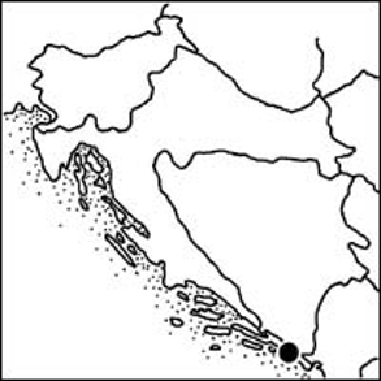Travel Reference
In-Depth Information
The city's sleepy charm is the result of its no-nonsense past. Busy merchants, the salt
trade,andshipbuildingmadeDubrovnikrich.Butthecity'smostvaluedcommoditywasal-
ways its freedom—even today, you'll see the proud motto
Libertas
displayed all over town
(see the
“Libertas”
sidebar).
Dubrovnikflourishedinthe15thand16thcenturies,butanearthquake(andensuingfire)
destroyed nearly everything in 1667. Most of today's buildings in the Old Town are post-
quakeBaroque,althoughafewpalaces,monasteries,andconventsdisplayingarichGothic-
Renaissance mix survive from Dubrovnik's earlier Golden Age. Dubrovnik remained a big
tourist draw through the Tito years, bringing in much-needed hard currency from Western
visitors. Consequently, the city never acquired the hard socialist patina of other Yugoslav
cities (such as the nearby Montenegrin capital Podgorica, then known as “Titograd”).
As Croatia violently separated from Yugoslavia in 1991, Dubrovnik became the only
Imagine having your youthful memories of good times spent romping in the surrounding
hills replaced by visions of tanks and warships shelling your hometown. The city was dev-
astated, but Dubrovnik has been repaired with amazing speed. The only physical remind-
ers of the war are lots of new, bright-orange roof tiles. Locals, relieved the fighting is
over but forever hardened, are often willing to talk openly about the experience with visit-
ors—offering a rare opportunity to grasp the harsh realities of war from an eyewitness per-
spective.

